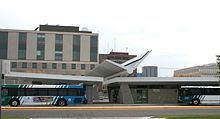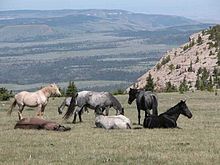Billings’ physical landform is the Interior
Plains. It's located in the fertile Yellowstone River valley with three
mountains around its area. The mountain helps lessen the city from harsh
cold weather during winter. One of the nearest mountains is the
Absaroka-Beartooth Mountains. While some moist air is being carried from the
Pacific Ocean, it’s called the “Chinook winds”. It helps lessen the extreme hot
and cold weather in the city.
The climate in Billings is semi-arid. Summers are
very hot, and winters are both dry and cold. During summer, the temperature
could get over 100 degrees Fahrenheit but usually 73 degrees Fahrenheit average.
The winter could be as low as -38 degrees or 23 degrees Fahrenheit average with
around some average of 57 inches of snowfall per year. Spring and fall are very
short seasons in Billings, but often unpredictable weather. Actually, it’s
considered mild in the northern area. The precipitation of Billings is around
14 inches per year.
Agriculture is an important part of Billings’
economy and their number one industry. Around 20,000 to 74,999 acres of wheat
were harvested in the Yellowstone County in 2002, but not enough precipitation
to grow corn. Therefore, oats are their replacement for corn. Billings’ primary
crops include oats, alfalfa, and sugar beets. Crops like oats often grow better
in a moister and cooler area. The soil that needed to grow oat is silt and
clay-loam soils. The oat are usually not made or transported for human food,
since its costs are low. It’s usually used primarily on making hays and feeding
livestock. In the other hand, Billings produce sugar beets and sell it for
millions of dollar per year. Especially during the fall, it’s full of the sweet
sugar smell sweeps across the city that’ being carried along with the cool air.
The sandy loam soils are rich and good natural
drainage, especially on the higher area. The amount of surface water in the
city is 0.275 square kilometers. The Billings Canal could be used for
irrigation. But it has better agricultural land than water to irrigate it; it
would require more water storage in non-irrigating seasons. The groundwater
could not be used because the coals are too deep below the surface. Also the
groundwater from the coals usually contains salinities, which is not suitable
for agriculture and domestic use.
There were climate changes, and it’s predicted
that it would be a bigger change in the future. Places in planting vegetation
would have to be moved to a higher area on the mountain. There is increase in
precipitation, and the rate of precipitation change is 10 to 20%.
Natural disasters in Billings include hail storms that could destroy
crops. There are occasional tornados, but there is no volcano or earthquakes.










